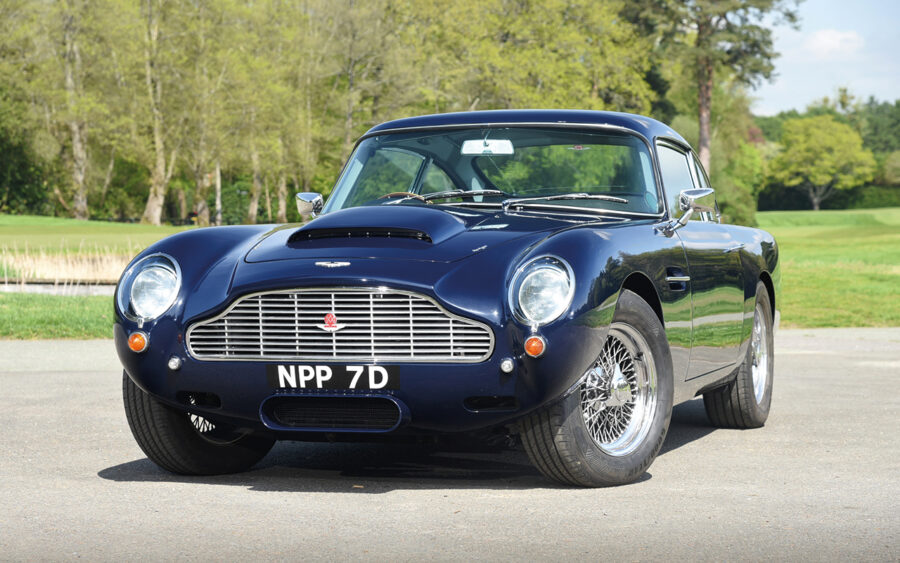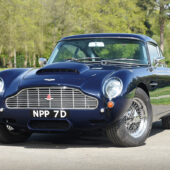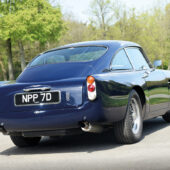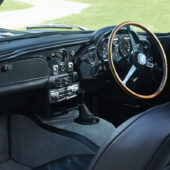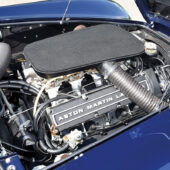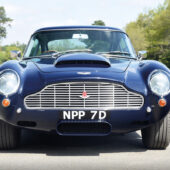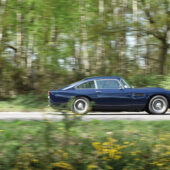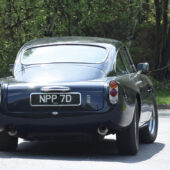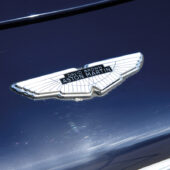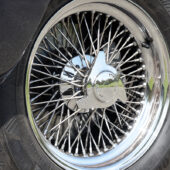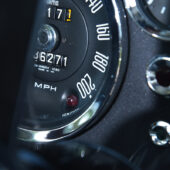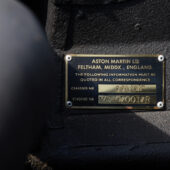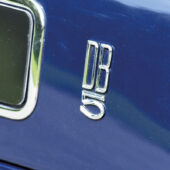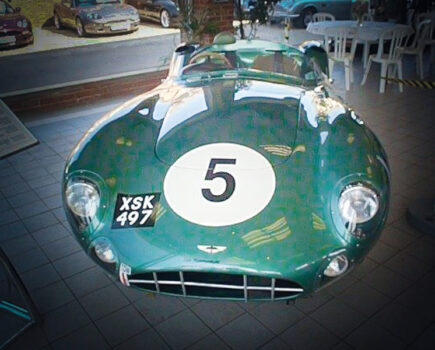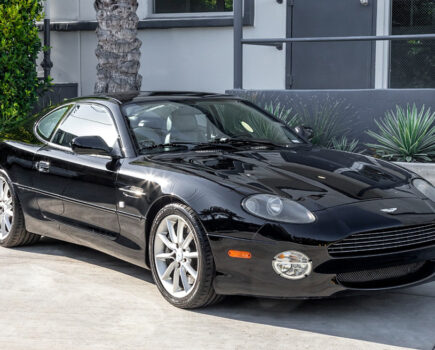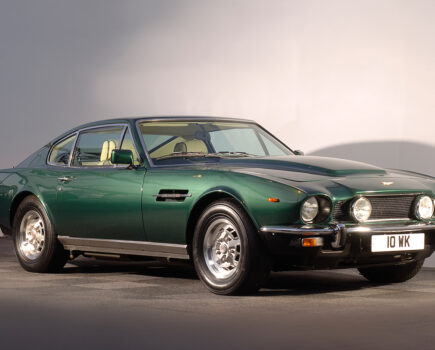Aston Martin produced a one-off DB5/DB6 hybrid during development of its famous Marek-designed V8 engine. We get behind the wheel of this special DB5 V8 prototype
Words and images: Paul Walton
This a car that shouldn’t exist for two very important reasons. Firstly, Aston Martin never officially produced a V8 version of the DB5. And secondly, as a development mule it would normally have been destroyed once its work was over. Yet here it is, a Newport Pagnell-built V8 version of Aston’s most famous model. Although the car breaks all the rules, it still represents an important and specific moment in Aston Martin’s history.
The reason behind the car’s existence is simple. When Aston needed to test the new V8 designed by Polish engineer, Tadek Marek, in early 1966, it produced a unique car using mainly surplus parts.
Newport Pagnell’s experimental department took a DB6 platform, removed the rear end and created a new one that would accept either a live axle – which Aston had used since the Fifties – or the De Dion arrangement which was being assessed for the future DBS model.
“Some deepish thought went into that backend to give us that facility,” said Bill Bannard during a recent interview about the car, who at the time of its construction was with Aston Martin’s experimental department.
Leftover DB5 panels then clothed the chassis but since the 6 was 4in longer, it needed extra bodywork between the door and rear wheelarch. Even more confusingly, a grille from a DB4 was used presumably because there was one in the workshop. “A real mongrel,” is how Bill describes the car. He goes on to say it was still fully painted and properly presentable, but it was never intended to be an attractive motor car and so was not polished.
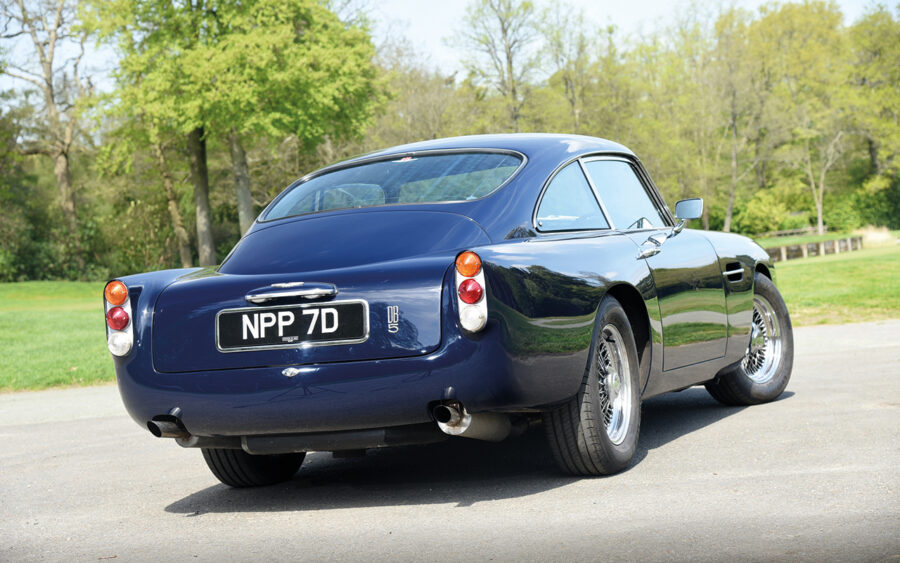
An early version of the V8 was then shoehorned under the bonnet in a space originally designed for the straight-six. As Bill says, getting the engine into place took, “An awful lot of patience.” He went on to say that the biggest issue due to the lack of room was getting the exhaust manifolds to fit, especially since Newport Pagnell didn’t have a pipe-bending machine. “We obtained two stacks of bends,” he continued, “and the first manifold we put on the car were five or six pieces welded together.”
As the first prototype to be built at Aston’s Newport Pagnell factory, it was given the chassis number 001/D/P.
The car was ready in March 1966 when it was registered NPP 7D (according to Bill, NPP was for Newport Pagnell Prototype). His surviving handwritten logbook shows it was regularly driven by the great and good of Aston Martin, from its chief designer, Harold Beach and Marek himself to William Towns, the designer of the DBS.
Bill drove the car the most though. “Enormous fun – but lethal,” was how he describes it today. Needing to put as many miles on the engine as possible, the DB5 V8 would be driven between 350 and 400 miles a day but usually close to the Newport Pagnell factory in case of an issue and never using the same roads twice. “I was doing a little bit more than the legal speed that was required,” explains Bannard.
For the next three years the car was used to assess different variations of the V8, including 4.8, 5.0 and the eventual 5.3 litres. It was driven to Germany to have fuel injection by Bosch fitted plus Italy for Weber carburettors of both IDA and DCOE design, the former necessitating a much larger bonnet bulge. “It was a very nice, docile motor,” continues Bill, “that gave 80 or so more horsepower than the current DB6 and could be quite exciting when pushed.”
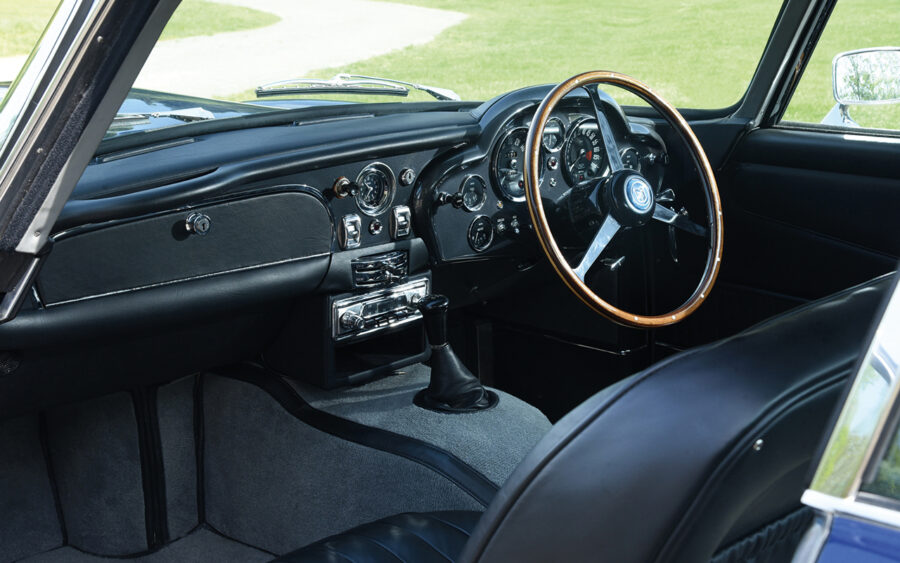
As a development mule, it had no ventilation system meaning it became incredibly hot inside, yet Bill reckons this was actually a positive. “It relieved us of the problem of putting that sophistication into the car and it stopped many people wanting to borrow it since they didn’t want to deal with those problems.”
Even after the focus had moved on to the V8 version of the DBS in the late 60s, the prototype was still occasionally used. “If one had to go somewhere and it was available and you wanted a bit of fun, well, hey, what a nice way to enliven the day!” laughs Bill.
His logbook finishes with a handwritten note saying it was destroyed in January 1969 yet somehow it escaped the crusher albeit with a straight-six and live rear axle. It was sold via a London-based Aston Martin specialist, Vic Brass, and was later owned by the well-known racing car preparer, Dave Reece, who together with advice from Bill, refitted a De Dion rear axle plus a 5.3-litre V8. The car was then entered into the Birkett 6 Hour race at Silverstone during the 90s when it eventually retired whilst battling with a DB4 because of seized brakes.
The DB5 V8 was restored later in the decade by renowned marque experts, RS Williams, who carried out a threeyear rebuild on behalf of the then owner, transforming the car from a rough-andready prototype to something close to what a production version could have been like. Among the changes, 16in wheels were fitted because due to the power of the early V8 (352bhp and 402lb ft), it kept breaking its 15in originals.

After spending two decades in storage on the island of Jersey, it was sold in 2022 via well-known Aston Martin specialist, Nicholas Mee, to Bryan Webb, a lifelong enthusiast of the marque. Bryan contacted the magazine earlier this year due to DB5 V8 being mentioned in issue five of AMD during the Tadek Marek biography. “You should really come and try it for real,” he said. I didn’t need to be asked twice.
Resplendent in its Pacific Blue paint and dripping in bright chrome, the car would turn heads even without its unique position in Aston’s history. It’s only when I look closely do I notice the car’s proportions have changed a little due to being 4in longer plus being wider due to the arches that have been teased out slightly. Together with its large oil cooler under the correct DB5 style of grille, plus a lack of bumpers and a more prominent bonnet bulge, the changes give the car a much beefier appearance than a standard example.
When Bryan lifts the bonnet, squeezed in the engine bay – and I do mean squeezed – is a V8. It’s not the original of course; it was fitted with many development versions of Marek’s V8 during its time as a test hack, all of which will have been destroyed. More used to seeing the unit in the later AM V8 range, it looks as out of place in a DB5 as a diesel would in the rear of a Formula One car.
Considering its current telephone-number value, I’m extremely honoured when Bryan offers me the driver’s seat. As a result of its thorough restoration over two decades ago, I doubt the now beautifully trimmed interior would have looked this good when the car was still used as a test hack. It appears largely standard until Bryan points out the speedo that finishes at 200mph, 20mph over standard which, like Clark Kent revealing a little of the Superman logo under his suit, gives a hint of the car’s sofar hidden potential.
There’s no denying its character when the V8 loudly bursts into life before settling down to a deep, meaty burble. Thanks to its size and power, the car rocks from side to side on tickover reminding me of the Jensen CV-8 my father owned when I was a child. With a light clutch and the responsiveness of the engine, the car is surprisingly easy to drive. I initially find the five-speed transmission with a dog leg first is stiff and notchy, but this becomes easier with speed.
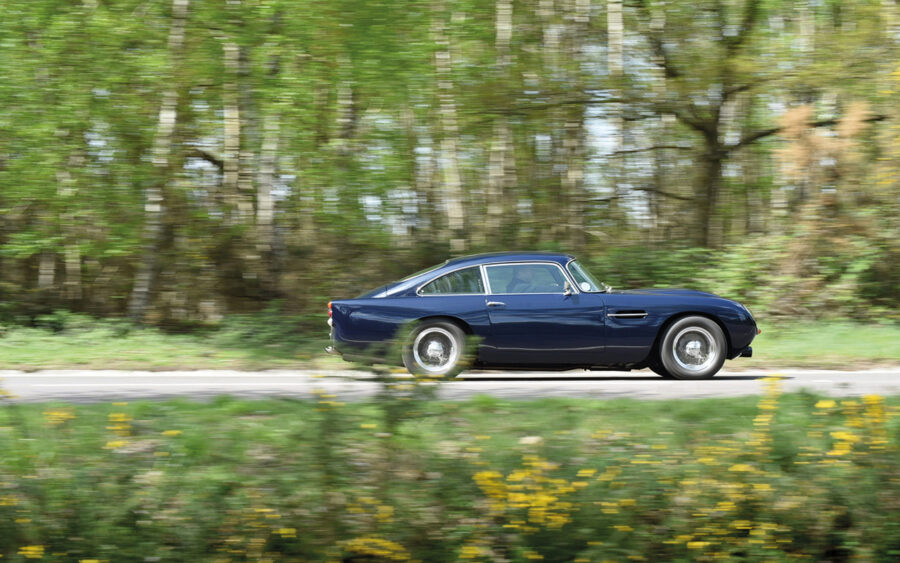
And then on a long, empty road, I snick the gearbox down to third and squeeze the throttle hard. The V8 responds instantly, the hardness of the acceleration genuinely taking me by surprise. Considerably lighter than the later AM V8s I’ve driven, it’s certainly faster and more responsive than its newer descendants.
It does lose a little of the standard DB5’s refinement, though, feeling as raw as a 60s British GT with an American V8 such as that CV-8 or a Gordon Keeble. Little wonder Bryan says the car has forever ruined standard DB5s for him and he now finds them too slow by comparison.
A lairy hot rod it might be but with perfectly weighted and nicely damped steering, it handles like the thoroughbred sports car the DB5 always was. Remaining stable through fast corners, it allows me to exit the bend at speed before nailing the throttle to once again feel the full force of the V8.
What surprises me the most about the car, though, is how well the DB6 platform copes with the extra power of the 5.3-litre. Heavy acceleration doesn’t unsettle it and neither do fast corners.
It’s a truly remarkable car and I can’t help but think if a V8 version had reached production then the DB5 could have been seen as the UK’s first genuine supercar. Certainly, due to all that power, James Bond wouldn’t have needed so many gadgets to defeat Goldfinger’s henchmen but rather just put his foot down.
Yet there’s more to the car than just speed. As the first Aston Martin to feature Tadek Marek’s V8, it represented the company’s future fortunes and a link between the David Brown era and the late 80s when the final car to use the engine in its original guise, the AM V8 Series V, was produced.
The car might not be supposed to have survived or even exist, but thanks to its speed, performance and positive impact on Aston Martin, I’m still very glad it does.

